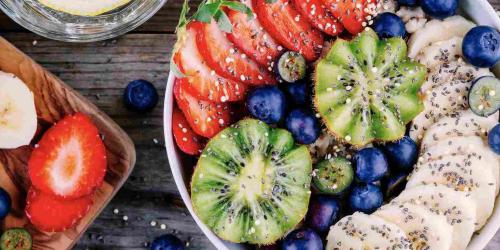Home delivery is a growing channel and is easier than ever to take advantage of – but it’s imperative to make sure your deliveries reach customers in the right condition and temperature and that they’re happy with the overall experience. While the growing reliance on third party online order platforms and their delivery fleet can make it difficult to control all parts of the process, there are some simple steps you can take to give your food the best chance of meeting your customers’ expectations:
- Ensure all food on your home delivery menu is ‘fit for purpose’
Don’t make the mistake of offering food on the home delivery menu which won’t travel well or is too difficult to maintain at the right temperature. Instead, cut back your full menu and focus on those meals which can be efficiently prepared and packaged, which will withstand the rigorous of transport and which work well as take home choices.
- Give the customer enough information to make an informed choice
Make sure your menu descriptors provide a clear overview of exactly what the customer’s ordering with particular regard to any food allergens or ingredients which can provoke food intolerance, such as gluten, lactose, nuts and so on. At the same time, be wary of making claims which cannot be substantiated – for example, you can’t label a meal as gluten free unless it contains no detectable gluten, which is virtually impossible to achieve if it’s prepared in a kitchen where gluten is readily present in other ingredients (wheat and its derivatives, rye, barley and oats) due to the likelihood of cross-contamination.
- Use appropriate packaging and choose it carefully
The packaging you choose not only has to insulate properly - keeping hot food hot and cold food cold – it also needs to keep the food safe and hygienic. Tamper-proof safety seals were virtually unheard of on home delivery food packaging prior to Covid but in these days of lockdowns have quickly become the norm. They feature security seals which are difficult to remove without damaging the packaging – so when customers see their packaging is undamaged, it reassures them that their order hasn’t been tampered with. Tamper-proof packaging costs a little more but it’s worth the extra to protect your business brand.
- Give customers the option of contactless payment
With people seeking to minimise unnecessary close contact, it’s helpful to provide customers contactless payment options. Mobile payment options such as Apple Pay or PayPal are a good choice, and a payment checkout that’s directly integrated within your mobile order app so customers can complete their order seamlessly is even better. The aim should always be to minimise the steps necessary for the customer to make the order while maximising convenience.
- Ensure your delivery staff keep their distance
Following on from the last point, you should also instruct staff to avoid contact with customers, such as by ringing their doorbell but leaving the food on the doorstep for the customer first. If your order system allows for it, it’s best to advise customers of what your procedure is in this regard, so they know what to expect and what role they need to play in the process – which will help to keep everybody safe.


